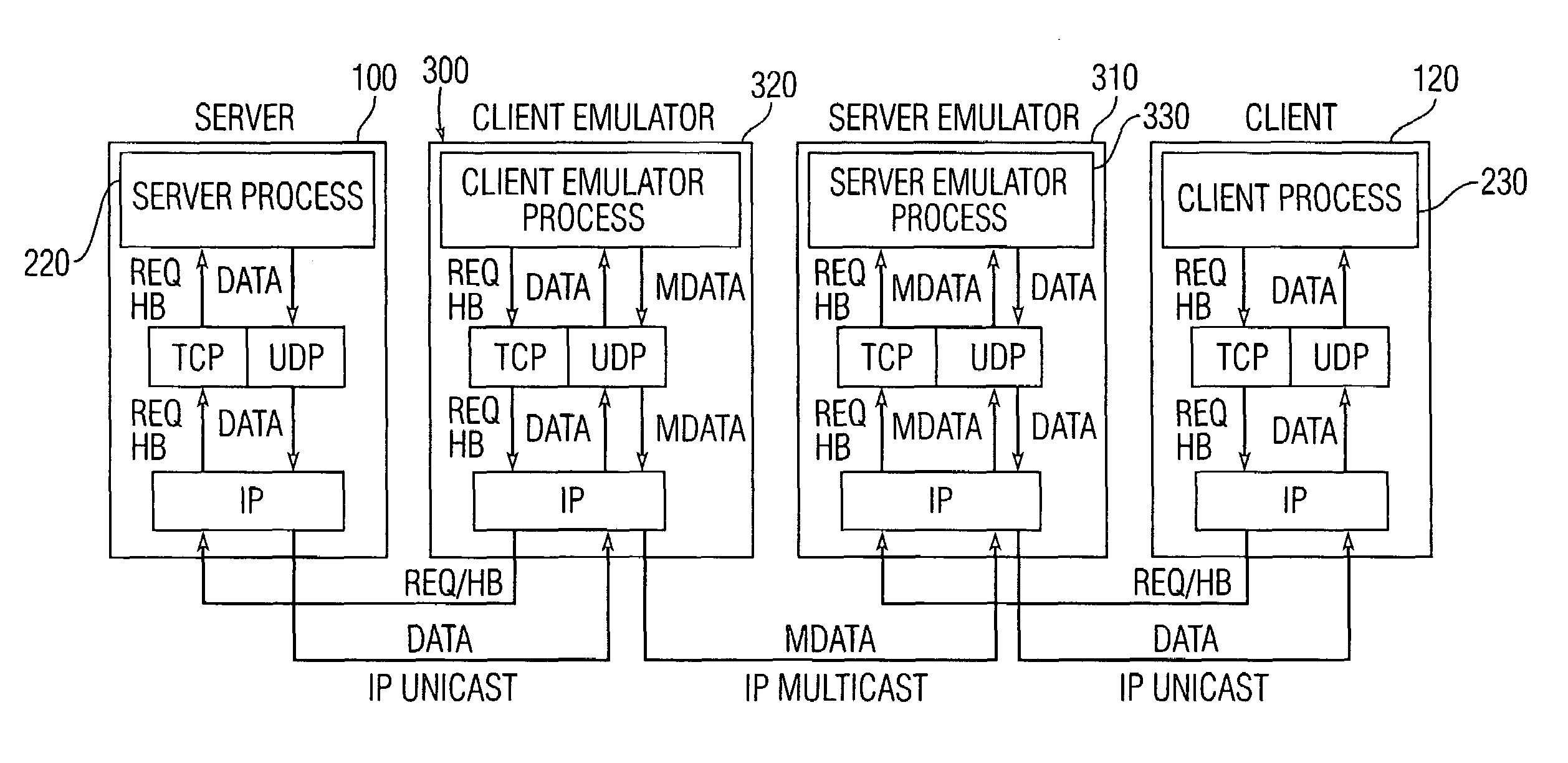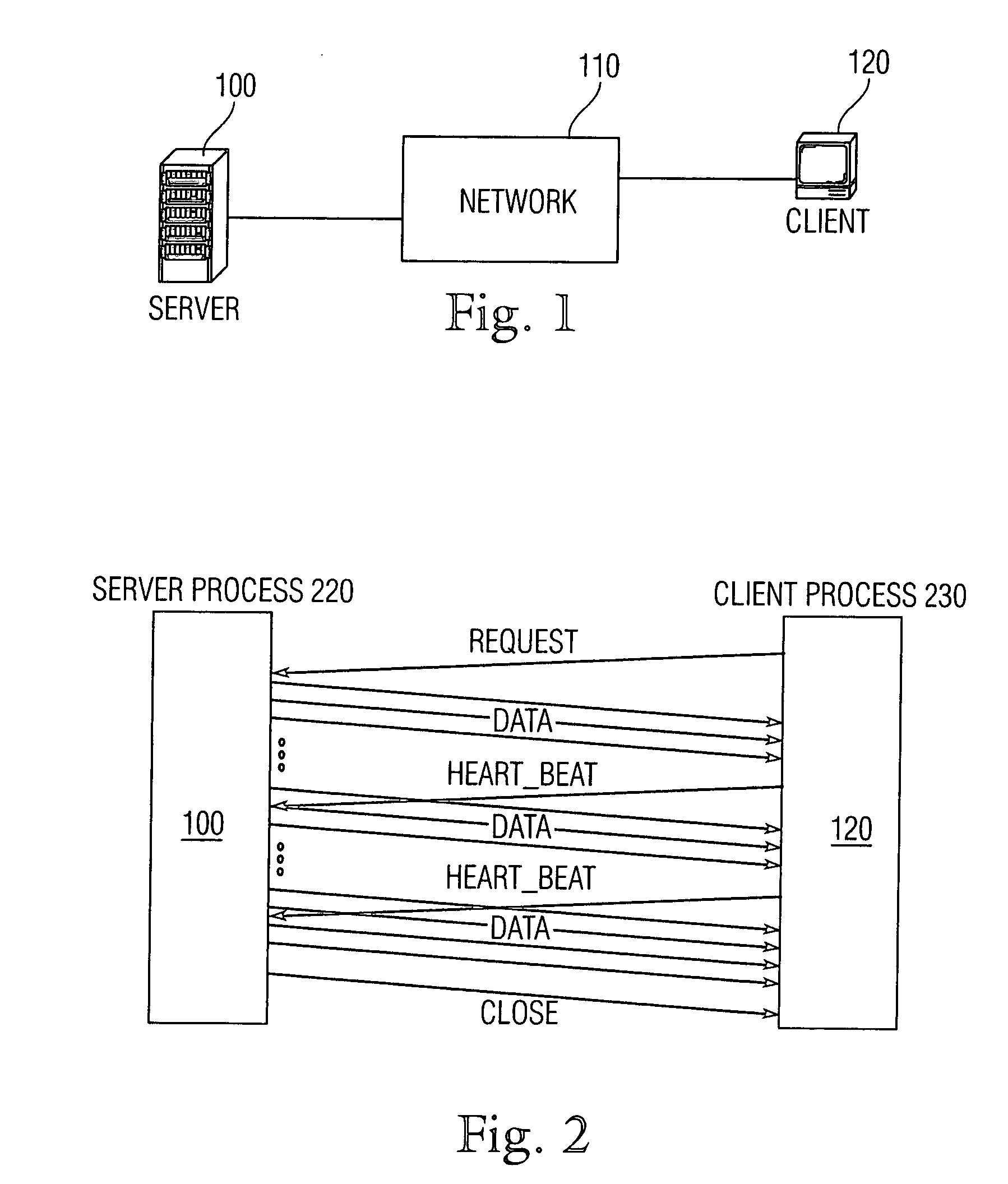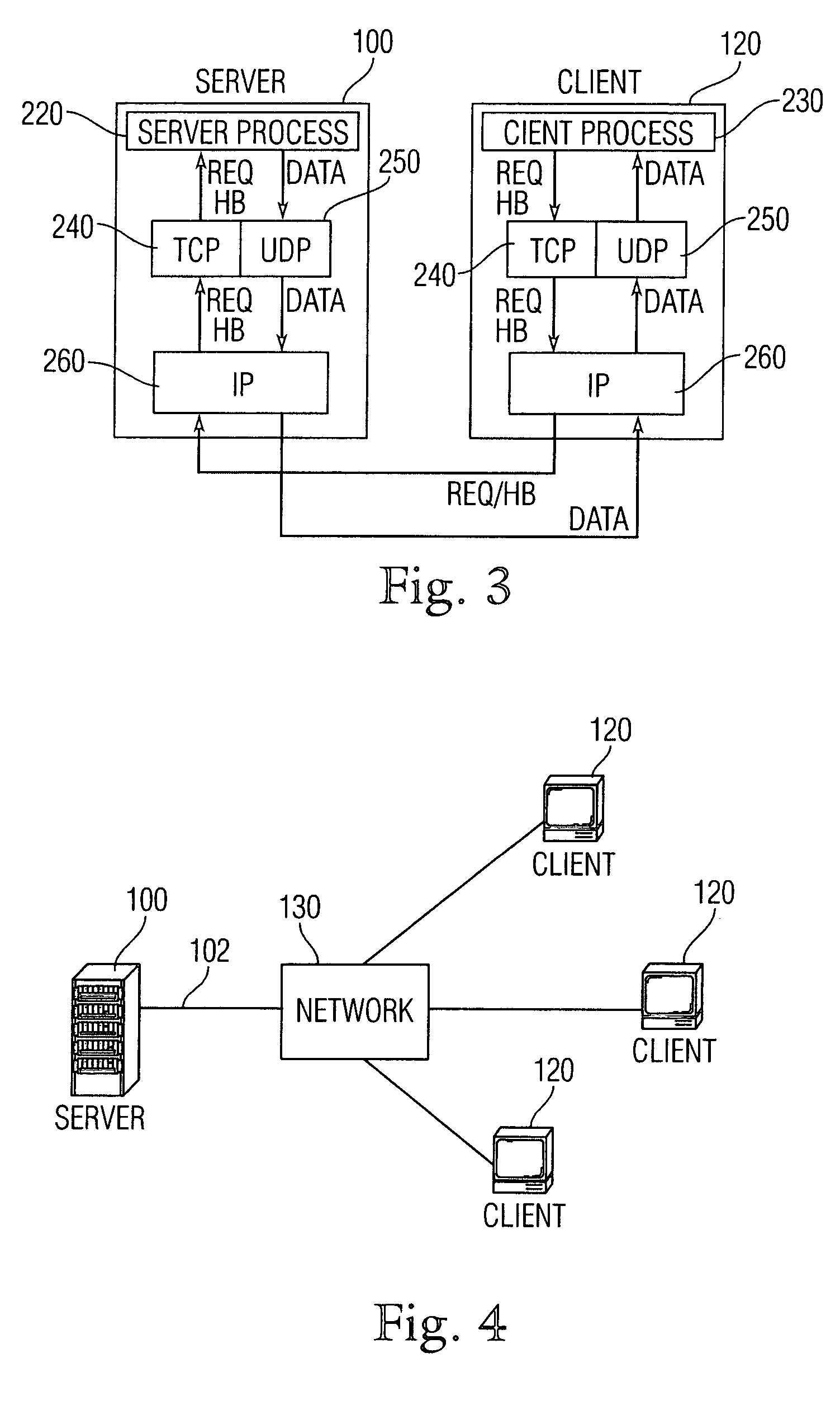Client-server emulation supporting multicast transmissions of media objects
a client-server and media object technology, applied in the field of multicast transmission of media objects through ip multicast networks, can solve the problems of increasing the complexity and cost of the implemented solution, not being economically feasible or technically feasible for satellite network or terrestrial broadcast network, and only offering a minimal transport service through datagram protocol without datagram delivery guarantee. to achieve the effect of easy system adaptation
- Summary
- Abstract
- Description
- Claims
- Application Information
AI Technical Summary
Benefits of technology
Problems solved by technology
Method used
Image
Examples
Embodiment Construction
[0036]An example of a target topology in which the invention can be used is illustrated in FIG. 4. As shown, a Server 100 is engaged in a communication session with three distinct Client hosts 120 each of which executes its respective own Client Process 230. There can be fewer or more Client hosts. The communication is carried out over a public or private network 130 capable of supporting the TCP / IP protocol suite. In particular, the network 130 supports IP multicasting. Any conventional network capable of supporting IP multicasting can be used.
[0037]In FIG. 4 if the Client Process 230 of each of the plurality (three shown) of Client Hosts 120 would simultaneously establish a private unicast communication session with the Server Process 220 executed by the Server 100, the total amount of bandwidth B required to deliver the same content to all three Client Processes 230 (measured on the link 102) would amount to three times the bandwidth b allocated to a session with a single Client ...
PUM
 Login to View More
Login to View More Abstract
Description
Claims
Application Information
 Login to View More
Login to View More - R&D
- Intellectual Property
- Life Sciences
- Materials
- Tech Scout
- Unparalleled Data Quality
- Higher Quality Content
- 60% Fewer Hallucinations
Browse by: Latest US Patents, China's latest patents, Technical Efficacy Thesaurus, Application Domain, Technology Topic, Popular Technical Reports.
© 2025 PatSnap. All rights reserved.Legal|Privacy policy|Modern Slavery Act Transparency Statement|Sitemap|About US| Contact US: help@patsnap.com



